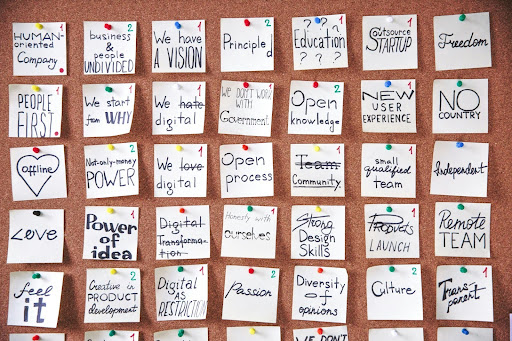
It’s Monday morning, and the day already feels like a marathon. Emails are piling up, deadlines loom, and personal errands demand attention. Time feels fleeting, and everything competes for space in your head.
Now imagine stepping back and breathing. Instead of scrambling, you have a clear plan—a roadmap to stay focused, reduce stress, and boost productivity. It’s not about squeezing every minute out but making every moment count.
A structured weekly plan helps you reclaim time and energy, tackle responsibilities with clarity, and avoid burnout. This guide will help you design a schedule that aligns with your goals and gives you control over your life.
Step 1: Assess Your Current Time Usage

Before creating a new schedule, it’s essential to understand how you’re actually spending your time. Without this clarity, it’s easy to overestimate productivity or hope things will improve on their own. That’s why the first step in building a successful schedule is conducting a time audit.
That essentially means to track your time to uncover hidden inefficiencies, like scrolling social media, responding to non-urgent emails, or focusing on unimportant tasks.
Time tracking is a game-changer. It shifts your perspective from “thinking” you’re busy to clearly identifying how time is being wasted. If you prefer pen and paper, you can achieve similar clarity by noting down tasks and time slots in a notebook.
Once you gather this data, it becomes easier to plan strategically—prioritizing tasks that align with your goals and eliminating ones that drain your time. This foundational step sets you up for success.
Step 2: Define Your Priorities and Goals

Now that you’ve gained clarity on how you’re spending your time, it’s time to sharpen your focus and set clear priorities. Without clear direction, it’s easy to get lost in a sea of tasks that don’t truly matter. Whether it’s small, seemingly insignificant tasks or distractions that pull you away from your true purpose, the lack of direction can turn your to-do list into a chaotic mess. This is where goal-setting plays a pivotal role.
By defining what you truly want to accomplish, you ensure that you’re dedicating your time to what counts, not just to what seems urgent at the moment. Goal setting is like a compass, guiding you through the clutter and helping you make purposeful decisions.
One powerful tool for organizing and prioritizing tasks is the Eisenhower Matrix, a method popularized by former U.S. President Dwight D. Eisenhower. This framework helps you categorize tasks into four key groups:
- Urgent and Important: These tasks require immediate attention and have a significant impact. These are your highest priorities, such as critical deadlines, emergencies, or problems that, if left unresolved, could cause major setbacks.
- Not Urgent but Important: These tasks are essential for long-term success and personal growth, but they aren’t time-sensitive. Think of them as strategic investments—tasks like career development, health, and relationship-building.
- Urgent but Not Important: These tasks demand attention but have less impact on your long-term goals. They might be someone else’s priorities, such as interruptions, meetings, or requests that seem urgent but don’t truly move you forward. These tasks are often the easiest to get caught up in, especially when you’re feeling overwhelmed.
- Not Urgent and Not Important: These are the tasks that are low-priority and can usually be eliminated, delegated, or postponed indefinitely.
By using this framework, you ensure your time is spent on what truly matters. It helps you identify and focus on high-impact activities while preventing you from being sidetracked by things that only appear urgent. It also offers the clarity to delegate or let go of tasks that don’t contribute to your larger goals.
As Matt Saternus, Editor-in-Chief at Plugged In Golf, wisely shares:
“The key to making progress is consistency. Putting one brick on the wall every day is far superior to trying to stack seven on Sunday after lying around for six days.”
This mindset is transformative. It’s not about trying to cram everything into one massive, stressful session or feeling guilty about taking a break. Instead, it’s about making consistent, manageable progress every day. Even small steps forward add up over time, creating momentum that propels you toward your goals.
By applying the Eisenhower Matrix and embracing a consistent progress mindset, you can make sure that every action you take is purposeful. Prioritize your most important tasks, avoid distractions, and focus on steady, daily improvement.
Step 3: Set Yourself Up for Success With the Right Tools and Environment

Having the right tools and environment is key to making your schedule work. It’s not just about managing time, it’s about creating conditions where success feels inevitable. The tools you use can empower you to stay organized and on-task.
Digital tools like Google Calendar, Trello, and Notion act as personal productivity assistants, helping you map out goals, track progress, and make adjustments as needed. These tools excel at breaking down big goals into manageable tasks and keeping everything accessible.
- Google Calendar: Seamlessly syncs all your appointments, reminders, and events in one place. Setting reminders helps you stay on top of deadlines.
- Trello: Visualize your tasks in a way that makes sense to you, whether it’s a list, a board, or a calendar. It’s perfect for organizing everything from weekly goals to complex projects.
- Notion: A one-stop workspace to keep your notes, tasks, and ideas in order. You can create templates, integrate it with other tools, and customize your workspace.
For those who prefer the tactile feel of pen and paper, a good paper planner can be a powerful tool. Writing down tasks and goals can make them feel more concrete and offers creative freedom with color-coding, bullet journaling, or simple lists. The method doesn’t matter as long as it helps you feel in control.
However, even the best tools won’t help if your environment doesn’t support your efforts. A cluttered, distraction-filled space can sap productivity. Instead, create an environment tailored to your tasks. A productive study space or work area should enhance focus and efficiency, not hinder it.
Step 4: Allocate Time Wisely (and Include Breaks)

Effective time-blocking is one of the most powerful tools for productivity. By assigning specific blocks of time to your most important tasks, you create a structure that keeps you on track and prevents your day from descending into chaos.
The goal here is not to work nonstop—balance is essential. Incorporating regular breaks is key to maintaining focus and sustaining productivity over the long term.
When planning your time, set aside uninterrupted blocks for tasks requiring deep focus and mental energy. These are your “golden hours” for peak performance. With the rest of your time, make space for recharging breaks to ensure you return to your work feeling refreshed. Sustained productivity isn’t about working harder; it’s about working smarter.
Here’s how you can use time-blocking effectively:
- Prioritize your most important tasks: Identify your fixed commitments and high-impact work that requires focus, and give these tasks dedicated, uninterrupted blocks of time.
- Break up your day: Schedule a mix of work sessions and breaks to maintain energy and mental clarity.
- Use the Pomodoro Technique: Work for 25 minutes, followed by a 5-minute break. After four cycles, take a longer 15-30 minute break to fully recharge.
- Use timers to stay on track: Whether you use a Pomodoro timer or a regular clock, set it to remind you when it’s time to move on to the next task or take a break.
Integrating mindful breaks into your schedule will improve your productivity and make your workday more enjoyable.
For more engaging breaks, consider incorporating physical activity. For example, an indoor putting mat is a fun way to unwind while staying active. Practicing your putting between tasks not only clears your mind but also provides a mental reset.
Here’s why it works:
- Relieves stress: Focusing on something physical helps shift your mind away from work-related stress.
- Improves focus: Returning to your next task after a short, focused break helps you re-engage with more energy.
- Fun and rewarding: It’s a fun way to relax that also lets you feel accomplished—each putt is a mini-win!
Of course, any physical activity is a great way to take a break. It’s important to find whatever activity works best for you.
Step 5: Build Flexibility Into Your Schedule

Life happens, and your schedule should reflect that. Even the best plans can be disrupted by emergencies, last-minute tasks, or delays. Incorporating flexibility into your week helps you stay calm and on track when the unexpected arises.
Include buffer time—small gaps between tasks—into your weekly schedule to give you space to adjust to setbacks and recover. Without it, a single disruption can throw off your entire day, leaving you feeling overwhelmed.
Here’s how to build flexibility into your schedule:
- Leave buffer time between tasks: Plan 20–30-minute gaps between meetings or tasks to give yourself room to recharge or handle any last-minute changes.
- Be realistic about task duration: Tasks often take longer than expected, so always add a little extra time to each task. For example, if a meeting is scheduled for an hour, leave a 15-minute window afterward.
- Factor in life’s surprises: Whether it’s a sick child or an urgent phone call, leave some breathing room to handle the unexpected without throwing your whole day off.
Remember, your schedule is a guide, not a rigid rulebook. Life isn’t perfectly timed, and flexibility helps you adapt while staying in control. Additionally, give yourself enough time to transition between tasks.
Step 6: Review and Refine Weekly

At the end of each week, take a moment to reflect on how things went. Did you stay on track with your goals? What tasks went smoothly, and where did things fall short?
This review process is an essential part of ensuring that your time is spent meaningfully and not just chasing after endless tasks. It’s about understanding what worked and why, so you can make informed decisions moving forward, learn from your experiences, and fine-tune your approach to improve efficiency, productivity, and, ultimately, your progress toward your goals.
Reflection makes it clearer what’s driving your productivity and what might be hindering it. When you take time to honestly assess your week, you begin to develop a deeper understanding of your workflow, habits, and priorities. This regular review allows you to recalibrate your methods, making it easier to adjust and stay on track for the long haul.
Here’s how to make your weekly review both effective and meaningful:
- Assess successes: Celebrating wins, both big and small, is crucial. Acknowledging progress, no matter how seemingly minor, helps build momentum and reinforces positive habits. When you recognize accomplishments, you boost your motivation and remind yourself that you’re moving in the right direction. Take a moment to reflect on your achievements, and don’t skip over the small victories—these are often the ones that make the biggest difference in the long run.
- Identify areas for improvement: Not everything will go perfectly, and that’s okay. The key is to be honest with yourself about where things fell short. Were there tasks that took longer than you expected? Did some tasks feel more overwhelming than others? Perhaps you got distracted or found certain meetings unproductive. Use these insights to figure out what needs to change. Maybe you underestimated the time needed for a specific task, or there were obstacles that you could avoid next time. Identifying these areas for improvement sets the stage for more effective planning in the future.
- Make tweaks for the upcoming week: Once you’ve reflected on what went well and what didn’t, it’s time to refine your approach for the week ahead. Maybe you need to block off more time for tasks that require more focus or push back certain meetings that seem to interrupt your flow. Don’t be afraid to experiment with changes to your routine or structure if it helps you get closer to your goals. Fine-tuning your schedule based on your reflections allows you to optimize your time in a way that better aligns with your priorities.
As Gautam Garg, CEO of Scanova, advises:
“To be productive is to design a life where progress feels effortless because every choice is rooted in clarity and intention.”
By reviewing your week, you ensure your schedule isn’t just a series of tasks to be completed—it becomes a tool for intentional, focused action. When you make small, consistent adjustments each week, you build a framework that helps you stay aligned with your goals, reduces unnecessary stress, and boosts your productivity in the process.
Bonus Productivity Hacks

Here are a few more tips to help you stay productive throughout the week:
- Prioritize Health and Wellness: Nothing kills productivity like being run down. Make time for exercise, sleep, and healthy eating to keep your energy levels high. An effective greens powder supplement can help you fuel your body and keep your energy up.
- Plan Your Week: Take 30 minutes every Sunday evening or Monday morning to review the upcoming week. Identify tasks that need extra time, and plan accordingly.
- Group Similar Tasks: Reduce context switching by grouping similar tasks, like emails or meetings, together. This helps you stay in the zone.
- Create a Family Schedule: If you’re managing a household, create a joint schedule so everyone knows what’s going on and can plan accordingly.
- Automate Repetitive Tasks: Save time by automating recurring tasks like billing and scheduling. This frees you up to focus on higher-value work. If you’re looking for a way to streamline your processes, check out this highly effective recurring billing software that can help simplify these activities.
Final Thoughts on Weekly Scheduling Success
By embracing these six steps, you’re setting yourself up to craft your own weekly schedule, one that’s truly tailored to you, keeps you focused, stress-free, and always advancing while leaving room for personal and social time. Start with small, manageable changes, and build a system that aligns with your own unique rhythm and needs.
The real secret to owning your week?
It’s all about creating a schedule that serves you, not the other way around. When you take charge of your time, you free yourself from the chaos and start working smarter, not harder.
Ready to revolutionize your productivity and take full control of your time? Start today, and watch how these simple tweaks help you get more done, with less stress, and a lot more enjoyment along the way.
Author: Jen Engevik
Jen Engevik is a seasoned content strategist and senior copywriter passionate about crafting unforgettable brand narratives and high-converting content. With extensive experience working with top-tier brands like Apple, TD Ameritrade, 20th Century Fox, Fabletics, Warby Parker, Thrive Market, Great, Binance, and more, she excels in driving growth through innovative storytelling and data-driven content strategies.
Follow Us